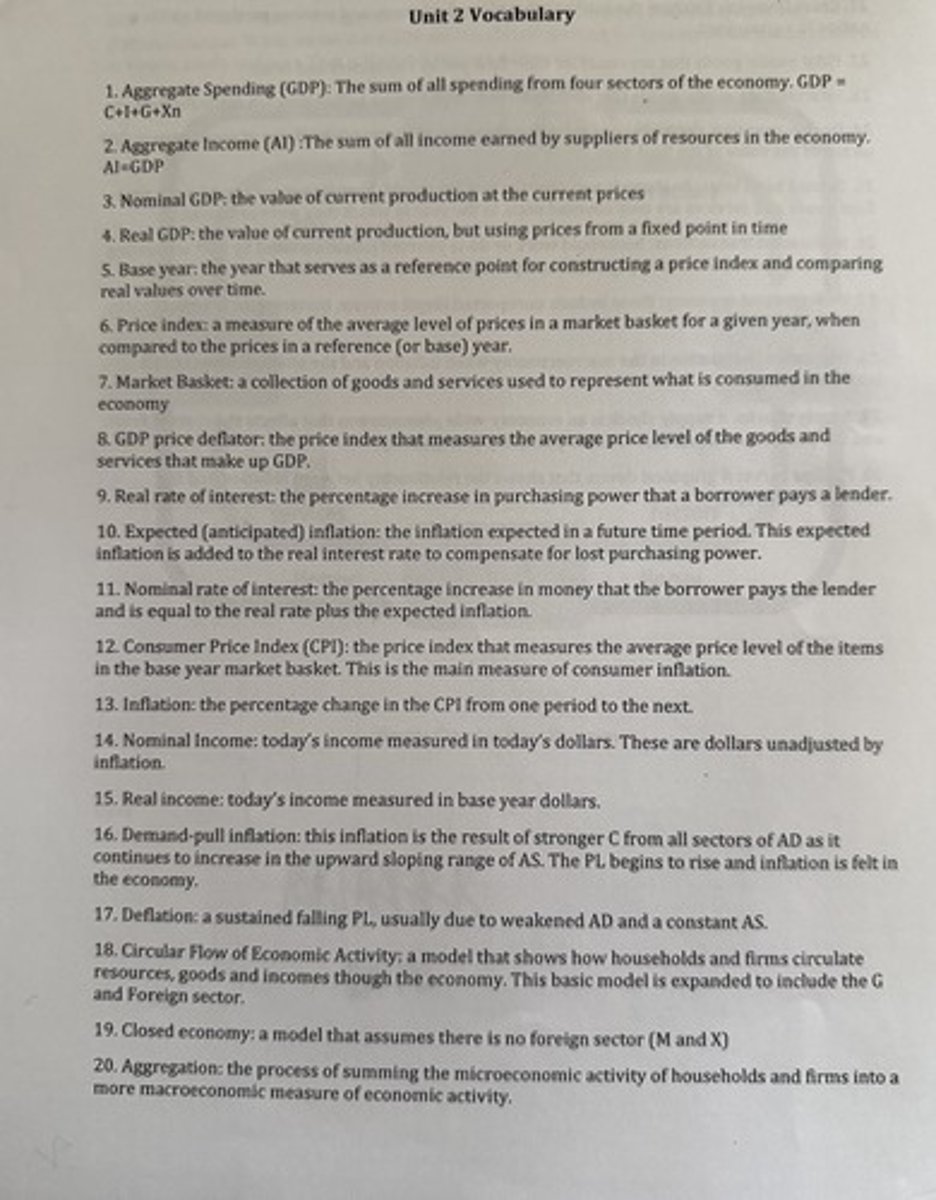Key Economics Vocabulary: GDP, Inflation, and Circular Flow
1/19
There's no tags or description
Looks like no tags are added yet.
Name | Mastery | Learn | Test | Matching | Spaced |
|---|
No study sessions yet.
20 Terms
Aggregate Spending (GDP)
The sum of all spending from four sectors of the economy. GDP = C+I+G+Xn

Aggregate Income (AI)
The sum of all income earned by suppliers of resources in the economy. AI=GDP
Nominal GDP
The value of current production at the current prices
Real GDP
The value of current production, but using prices from a fixed point in time
Base year
The year that serves as a reference point for constructing a price index and comparing real values over time.
Price index
A measure of the average level of prices in a market basket for a given year, when compared to the prices in a reference (or base) year.
Market Basket
A collection of goods and services used to represent what is consumed in the economy
GDP price deflator
The price index that measures the average price level of the goods and services that make up GDP.
Real rate of interest
The percentage increase in purchasing power that a borrower pays a lender.
Expected (anticipated) inflation
The inflation expected in a future time period. This expected inflation is added to the real interest rate to compensate for lost purchasing power.
Nominal rate of interest
The percentage increase in money that the borrower pays the lender and is equal to the real rate plus the expected inflation.
Consumer Price Index (CPI)
The price index that measures the average price level of the items in the base year market basket. This is the main measure of consumer inflation.
Inflation
The percentage change in the CPI from one period to the next.
Nominal Income
Today's income measured in today's dollars. These are dollars unadjusted by inflation.
Real income
Today's income measured in base year dollars.
Demand-pull inflation
This inflation is the result of stronger C from all sectors of AD as it continues to increase in the upward sloping range of AS. The PL begins to rise and inflation is felt in the economy.
Deflation
A sustained falling PL, usually due to weakened AD and a constant AS.
Circular Flow of Economic Activity
A model that shows how households and firms circulate resources, goods and incomes through the economy. This basic model is expanded to include the G and Foreign sector.
Closed economy
A model that assumes there is no foreign sector (M and X)
Aggregation
The process of summing the microeconomic activity of households and firms into a more macroeconomic measure of economic activity.